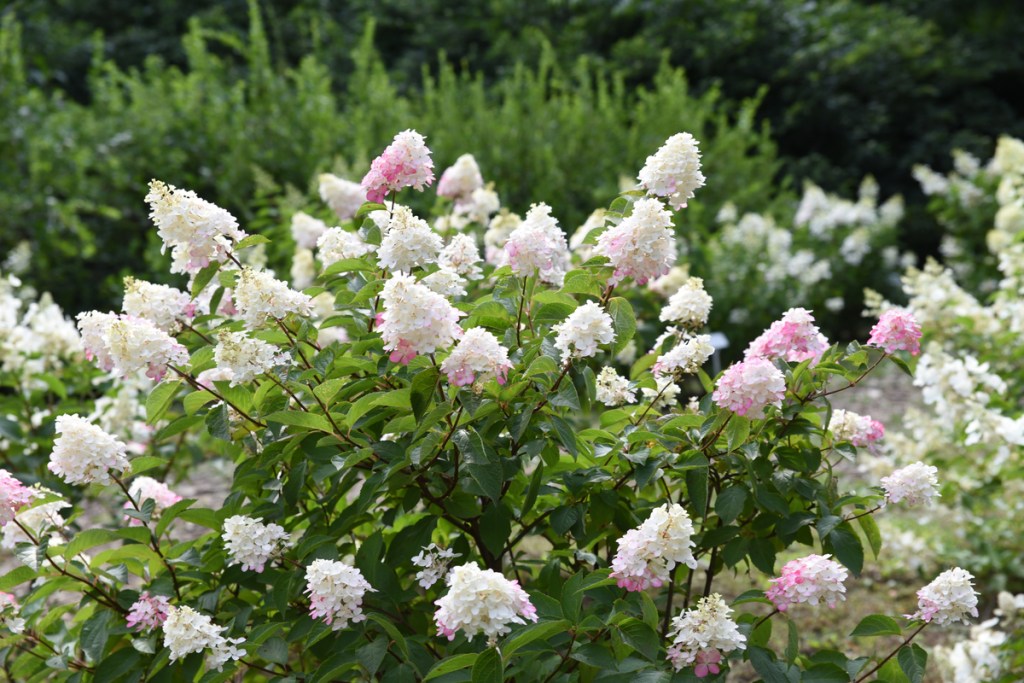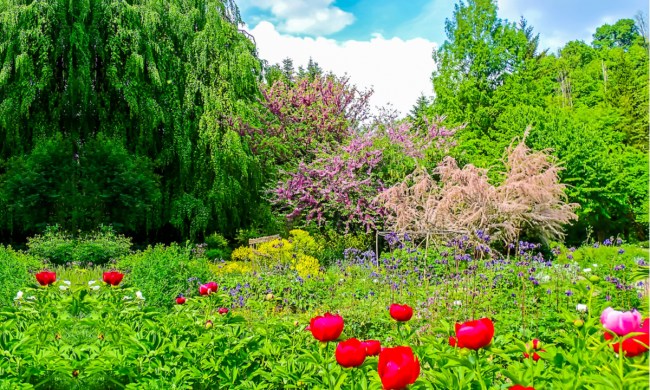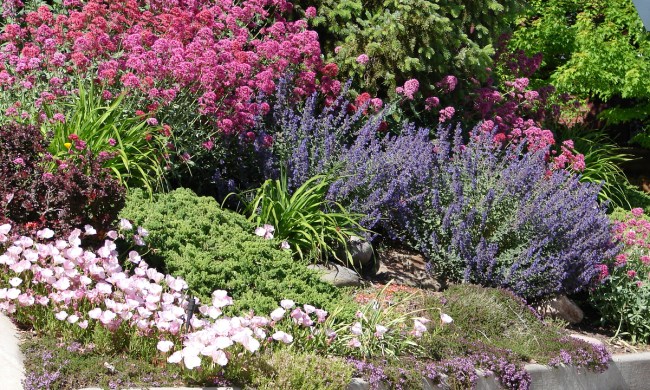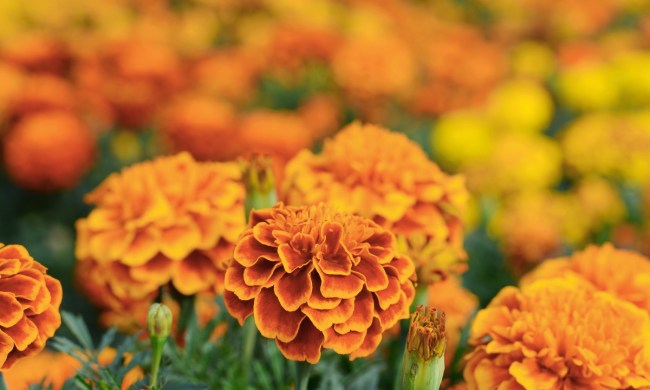
Hydrangeas add massive curb appeal to any landscape. They prove incredibly useful as screen plantings, informal hedges, landscape accents or focal points, foundation plants, and other creative applications. A big part of hydrangea appeal is the giant flower cluster. It’s hard not to love a bloom as big as your head. They come in shades of lime, white, pink, red, purple, and blue. Some are globe-shaped, others are flat discs, and others are conical.
Gardeners have been in love with hydrangeas seemingly forever and their popularity shows no signs of waning. Nurseries introduce amazing new cultivars each year that feature new colors, shapes, sizes, or abilities that we just can’t live without. Following are some of the best hydrangea varieties available right now.
Quick Fire Fab, H. paniculata
This striking new H. paniculata cultivar blooms up to two weeks earlier than other panicle hydrangeas. It produces big, full, showy mophead blooms on extra sturdy stems. The unique, x-shaped flowers mature from base to tip, progressing from white to pink to bright pink to deep red through the growing season.
Size: 6 to 8 feet tall and wide
Hardiness Zones: 3 to 8
Exposure: Full to partial sunlight
Bloom Time: Summer
Berry White, H. paniculata
Strong stems, gigantic flowers, and strong color make Berry White one of the most amazing new panicle hydrangeas. The flowers start out white, progressing to pink and intense berry red before maturing to wine red. Red color begins to develop early in the season, but the best color develops in early fall.
Size: 7 feet tall, 5 feet wide
Hardiness Zones: 3 to 8
Exposure: Full sun to part shade
Bloom Time: Summer
Limelight Prime, H. paniculata
The big panicle blooms of Limelight hydrangeas glow in the summer sunlight. Limelight Prime features the same gorgeous blooms, only with deeper green foliage, stronger stems, and a more compact, upright growth habit. The blooms emerge and remain vividly lime green until they mature to pale pink, followed by a transition to deep watermelon pink.
Size: 4 to 6 feet tall, 4 feet wide
Hardiness Zones: 3 to 8
Exposure: Full to partial sun
Bloom Time: Summer
Fire Light Tidbit, H. paniculata
The tiniest, most compact panicle hydrangea, Fire Light Tidbit, is a perfect choice for smaller landscapes or container gardening. In mid summer, dozens of large mophead flowers nearly blanket the foliage in bright white. The blooms gradually take on pink and red tones as they mature, holding excellent color through frost.
Size: 2 to 3 feet tall, 3 feet wide
Hardiness Zones: 3 to 8
Exposure: Full to partial sun
Bloom Time: Summer

Seaside Serenade Newport, H. macrophylla
This rebloomer displays masses of full mophead bloom clusters that mature to deep pink. Strong stems, waxy leaves, and sturdy flowers on Seaside Serenade Newport keep the blooms looking great for up to three months. And, it reblooms until frost.
Size: 4 feet tall and wide
Hardiness Zones: 4 to 9
Exposure: Part shade to part sun
Bloom Time: Spring through Fall
Let’s Dance Rhythmic Blue, H. macrophylla
Bigleaf hydrangeas are traditionally more popular in the South, due to the possibility of cold damage and loss of blooms in northern zones. Let’s Dance Rhythmic Blue offers better performance in harsh winters and requires no pruning. It blooms on both old and new wood, for nearly continuous production of big pink or deep blue flowers from early summer through fall.
Size: 4 feet tall and wide
Hardiness Zones: 5 to 9
Exposure: Partial to full sun
Bloom Time: Summer, Fall
Summer Crush, H. macrophylla
This new release from the popular Endless Summer series of reblooming hydrangeas features a compact growth habit and big raspberry red or neon purple blooms. The intense color, compact habit, and weather tolerant nature of this cultivar make it an outstanding choice for containers and intimate landscape spaces.
Size: 3 feet tall and wide
Hardiness Zones: 4 to 9
Exposure: Full to partial sun
Bloom Time: Spring, Summer, Fall
Tuff Stuff, H. serrata
Mountain hydrangeas are less affected by cold winters than H. macrophylla, so Tuff Stuff is an especially good choice for northern gardeners. The compact form and tidy habit fit well into perennial borders or container gardens, and make outstanding small landscape focal points. Repeating waves of pink lacecap flowers attract butterflies and other pollinators from spring through fall.
Size: 3 feet tall and wide
Hardiness Zones: 5 to 9
Exposure: Partial to full sun
Bloom Time: Summer, Fall

Invincibelle Spirit II, H. arborescens
This is an improved selection of the very first pink ‘Annabelle’-type hydrangea. Upgrades include darker green foliage, stronger stems and larger blooms. The fresh flowers are deep pink, maturing to green. Invincibelle Spirit II reblooms for fresh waves of color through fall.
Size: 4 feet tall and wide
Hardiness Zones: 3 to 8
Exposure: Full to partial sun
Bloom Time: Summer through fall



